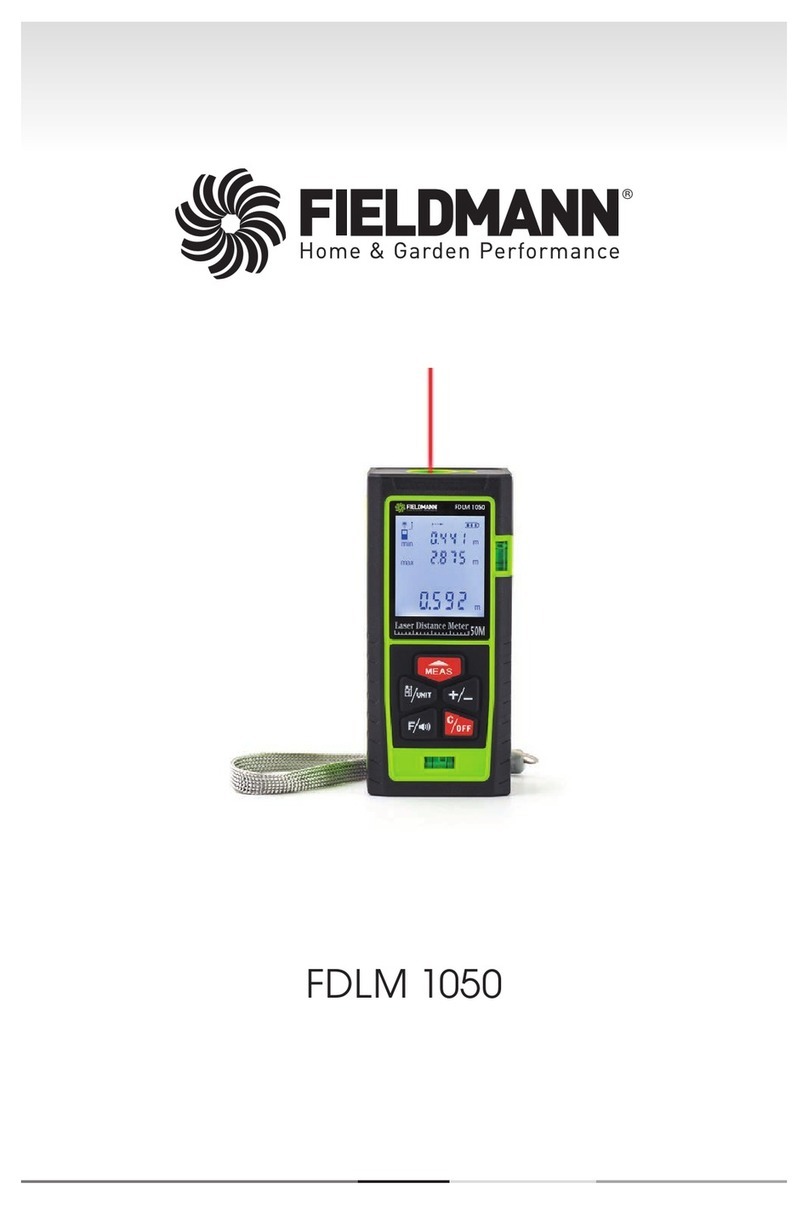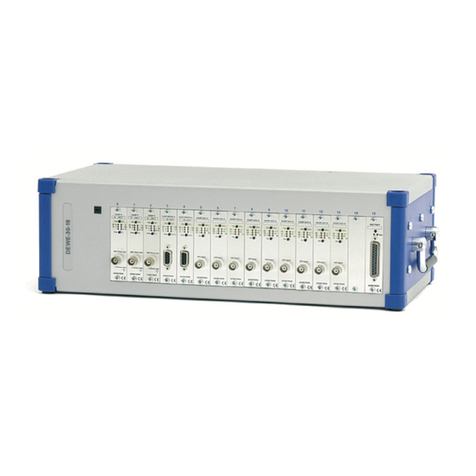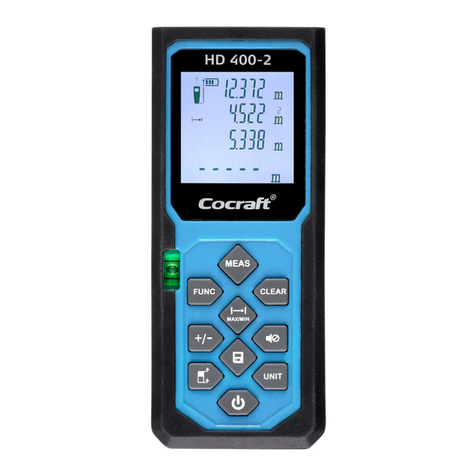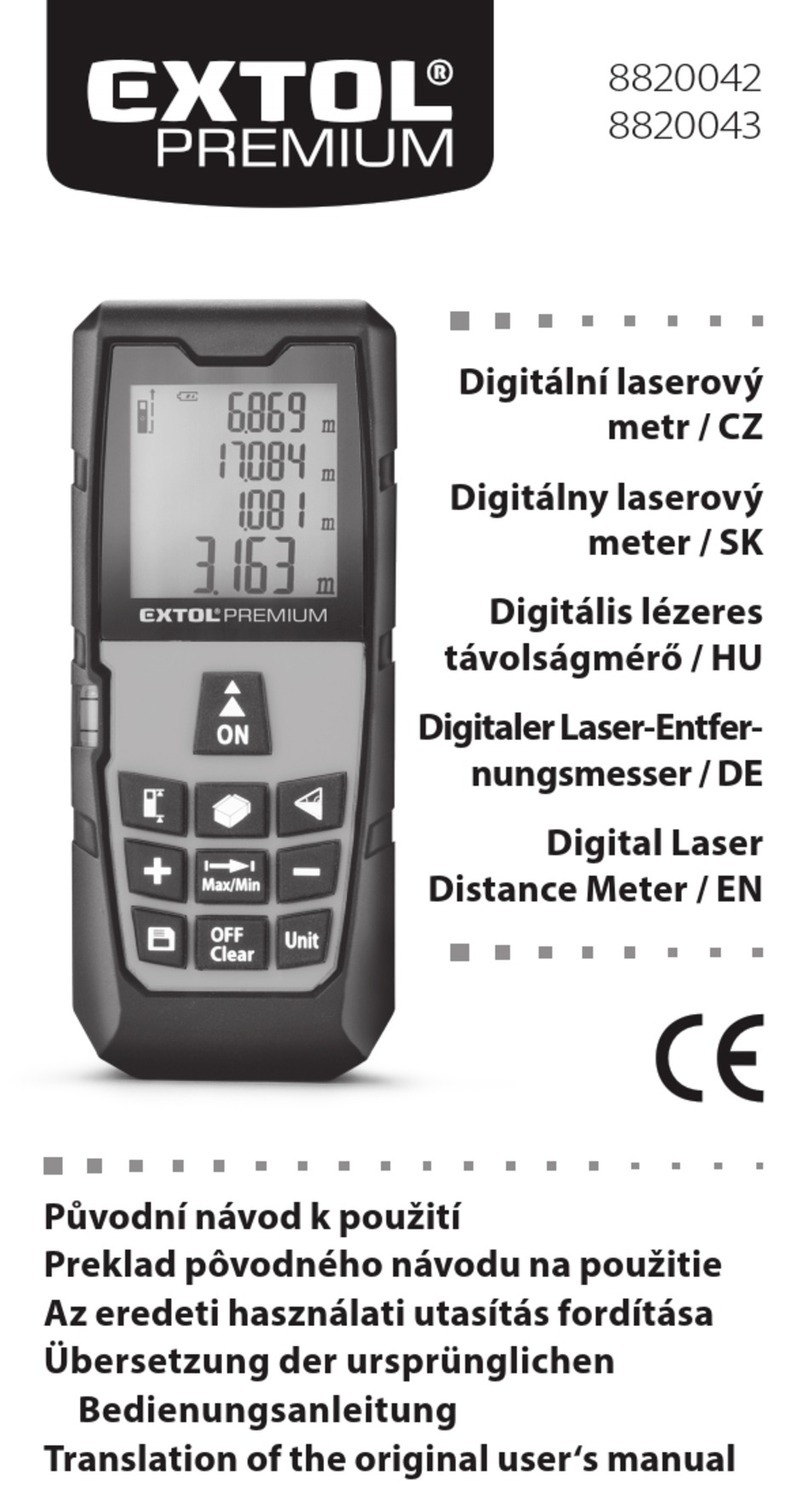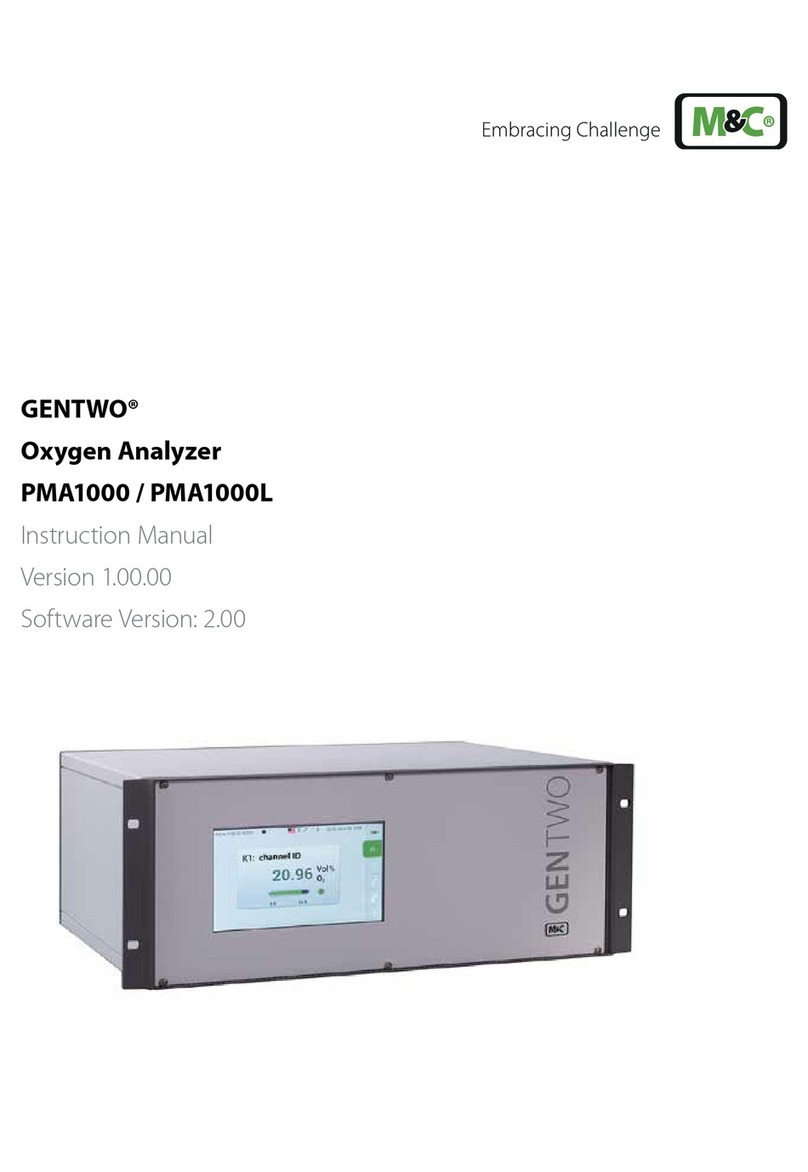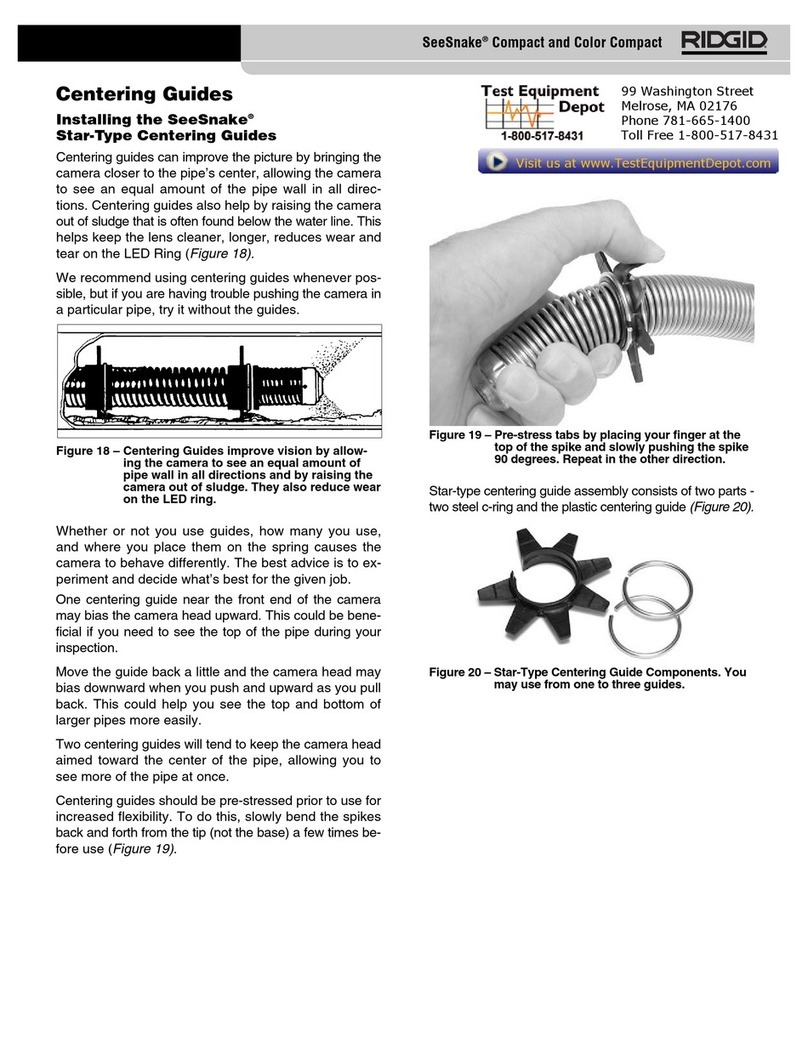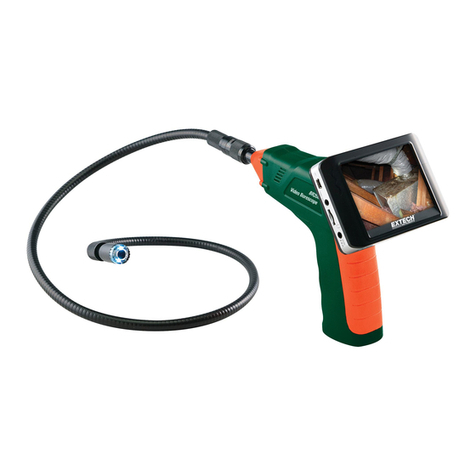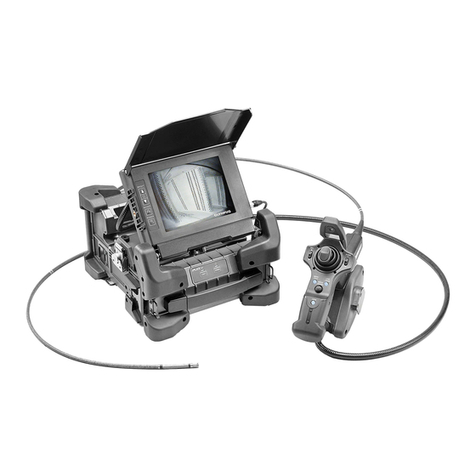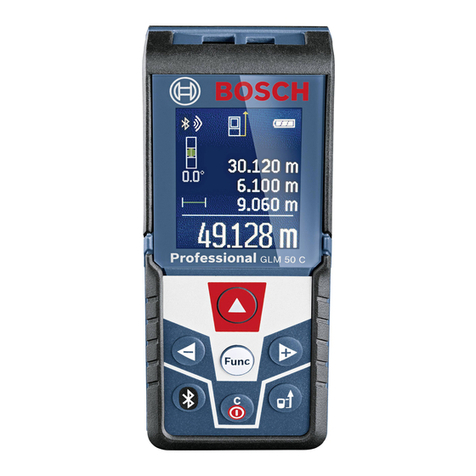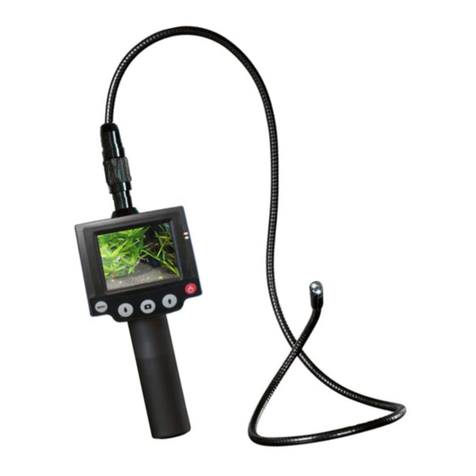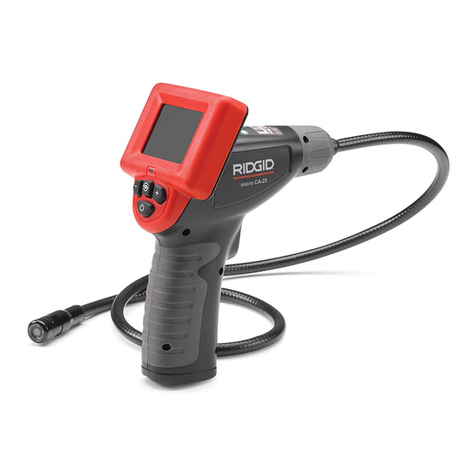
6
2.2mm 2.8mm
Insertion Tube
Outer Diameter 2.2mm 2.8mm
Lengths 1.0m, 1.5m, 2.0m 1.0m, 1.5m, 2.0m
Exterior Material Tungsten EasyGlide, crush-resistant
Chemical Compatibility Water, machine oil, heating oil, diesel, 3.5% saline concentrate
Articulation Range 180°±10°
backward
360° around, 140±10°
backward
Optics
Field of View 120° ± 10° 85° x 85°
Depth of Field 3.0mm - 50.0mm
Eective Pixels 160,000 pixels
Illumination Method 4 Super high-intensity white LEDs
Illumination Output ≤ 4,000lux
Base Unit
Display Monitor 5.5’’ OLED touch screen
Articulation Control umb-actuated, mechanical rocker
Brightness Control 10-step LED brightness adjustment
Control Buttons Two multi-function mini joysticks and le/right buttons
Playback Photos, videos (w/wo audio), thumbnail view
Audio / Microphone 3.5mm port
Internal storage 32 GB SD Card | 10,000 photos, 8 hours video
Data I/O ports SD card, HDMI, USB Type C
Batteries Two 18650B PCB-Protected Li-ion batteries (rechargeable)
Operating Method One handed, portable
Dimensions 13.6” x 6.2” x 7.3”
Weight 2.09 lbs. / .95 kg
Menu Functions and Options
User Interface Pop-up menu operation, menu navigation, touchscreen
File Management Photo and video recording, playback, thumbnail preview, delete
Image Control Image freeze, image ip, zoom in/out
Image Format BMP, PNG or JPG
Video Format AVI or MP4
Language English, French, Spanish
Operating Limits
Run Time ≤ 3 Hours
Operating Temp. Base Unit -10 – 50°C, -5 – 122°F
Operating Temp. Insertion Tube -20 – 60°C, -4 – 140°F
IP Rating, Insertion Tube IP67
II PRODUCT SPECIFICATIONS
